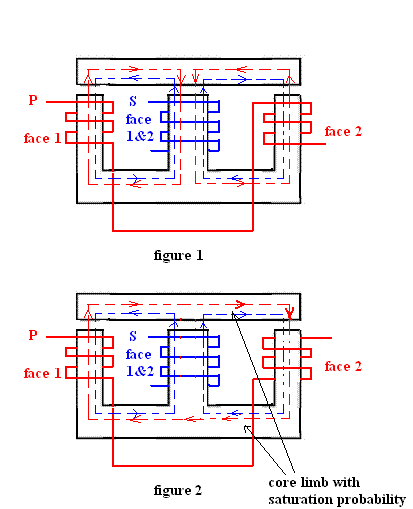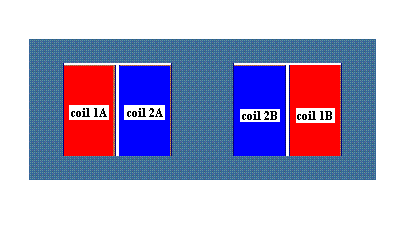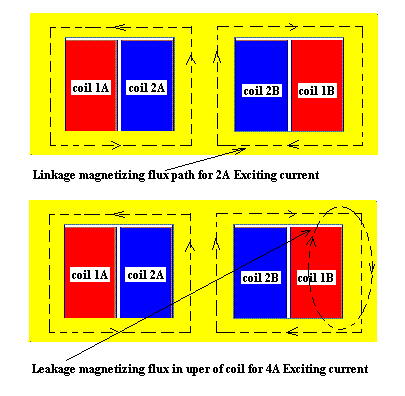- This topic has 5 replies, 1 voice, and was last updated 2 years, 11 months ago by .
-
Topic
-
I have created a model of a transformer comprising a figure 8 core with face 1 of the primary and face 1 of the secondary coils in the first 'hole' of the figure 8 and …
I have created a model of a transformer comprising a figure 8 core with face 1 of the primary and face 1 of the secondary coils in the first 'hole' of the figure 8 and face 2 of the primary and face 2 of the secondary in the second 'hole' with an air gap between the coils and the upper face of the core. I have flux deflection and don't understand why.
ok, here goes! If you can imagine a rectangular 'figure 8' core and inside the two holes i have placed a primary and secondary coil. The first face of the primary coil is on the left hand side of the left 'hole' and the first face of the secondary coil is on the right hand side of the left 'hole' and the second face of the secondary coil is on the left side of the right hand 'hole' and the second face of the primary is on the right side of the right hand 'hole'. I have an air gap between the upper of the coils and the lower of the core face of 5mm. I have measured in this gap in both 'holes' and in the left hand hole air gap the flux is barely negative and in the right hand hole the flux is barely positive, can anyone tell me why?
- You must be logged in to reply to this topic.


 This is the transformer that I have designed and as can be seen I have measured in the air gap between the upper face of the coils and the lower face of the core. The coils are copper with 1000 turns each and a current of 4A is being applied to the primary coil only. In that air gap is hardly any flux, on the left side is just below zero and on the right side it is just above zero. Is this due to mutual induction and an opposing force being set up in the secondary coil and also due to the air gap reluctance which is higher than that of the core? I am only interested in the air gap between the coils and the core and not the air gap between the coils. I have also noticed that when I apply a current of 2A the flux in the core is quite low, but if I apply 4A it is quite high which would follow, but here
This is the transformer that I have designed and as can be seen I have measured in the air gap between the upper face of the coils and the lower face of the core. The coils are copper with 1000 turns each and a current of 4A is being applied to the primary coil only. In that air gap is hardly any flux, on the left side is just below zero and on the right side it is just above zero. Is this due to mutual induction and an opposing force being set up in the secondary coil and also due to the air gap reluctance which is higher than that of the core? I am only interested in the air gap between the coils and the core and not the air gap between the coils. I have also noticed that when I apply a current of 2A the flux in the core is quite low, but if I apply 4A it is quite high which would follow, but here